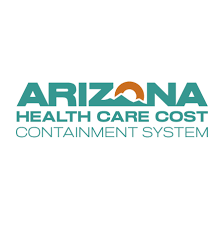The recent Supreme Court decision in Chevron U.S.A. v. Natural Resources Defense Council has sent shockwaves through the regulatory landscape. In a 6-3 ruling last summer, the Court overturned the long-standing Chevron doctrine.
Loper Bright Enterprises v. Raimondo aka Chevron
That doctrine allowed federal agencies like the FDA, CMS, and EPA to interpret ambiguous congressional statutes within reasonable bounds. By scaling back Chevron deference, this ruling shifts more power back to the courts and away from agencies—a change with far-reaching implications for public health policy.
The Big Picture: Why the Chevron Ruling Matters
For four decades, Chevron deference allowed federal agencies to shape policies around complex issues where Congress provided only general guidelines.
Agencies like the FDA, CMS, and EPA could implement policies based on their specialized understanding. In areas as vital as drug safety, environmental protections, and health care standards, this deference was often crucial.
Under the new Supreme Court ruling, courts are less likely to give agencies the benefit of the doubt in interpreting vague statutes, meaning many existing and future policies could face intense scrutiny.
The Chevron ruling adds new layers of uncertainty to agency-led initiatives at the federal level, including those addressing critical public health issues.
The Impact on Health Agencies: FDA, CMS, and EPA
For the FDA, which relies on scientific and clinical expertise to regulate everything from prescription drugs to food safety, the reduced deference may impede its ability to keep up with rapidly evolving medical and technological advancements.
Without Chevron deference in place the FDA faces new prolonged legal battles simply to implement new safety standards, slowing down the approval of new life-saving drugs and even limit the FDA’s ability to regulate health products, such as e-cigarettes or supplements, which pose potential risks to public health.
The CMS is similarly affected. CMS has leaned on Chevron deference to implement policies improving care standards, controlling costs, and expanding access to essential health services.
The reduction of deference means that any new or even existing CMS guidelines could face court challenges, delaying or complicating their implementation and creating uncertainty in the health care system. Policy adjustments to improve patient outcomes, for instance, might now require explicit congressional approval, slowing progress and innovation.
The EPA is perhaps impacted the most by the overturning of the Chevron doctrine. Under the new ruling, the EPA’s ability to enforce environmental standards will be curtailed, affecting public health—especially when it comes to issues like air quality and exposure to harmful chemicals.
Without Chevron deference, the EPA’s hands are tied in setting stringent standards on pollutants and chemicals, potentially compromising public health protections against environmental hazards.
The Chevron Ruling—A Temporary Mixed Blessing?
While this Chevron decision is already causing immediate challenges, it also holds a potential short-term benefit given the likely actions of the upcoming Trump administration.
Under the Biden administration, the ruling is likely to create hurdles for evidence-based, health-focused policies. However, the incoming Trump administration will likely be less aligned with public health interests, and the Chevron ruling may even act as a brake on agency rulemakings that might undermine health protections.
In this light, the Chevron decision, which seemed like a net negative for public health policy last week, now could be potentially beneficial for the next four years.

